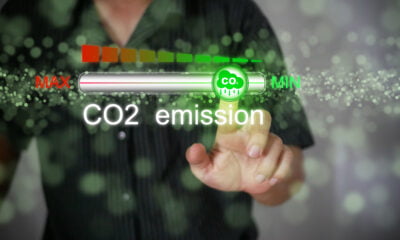

Energy
Transatlantic Divide In Efforts To Reach Paris Targets
‘In the Pipeline’ is a recently published report which reveals that European companies are investing into low-carbon technologies and transferring to gas, whilst US counterparts could risk being left behind.
A new report, analysing a US$1.2tn grouping of the world’s major publicly-listed international oil and gas companies reveals a transatlantic divide as European companies outperform their US peers in preparedness for a low-carbon future by beginning to invest in alternative energy sources and shifting to gas.
The oil and gas industry, and the use of its products, accounts for approximately 50% of global CO2 emissions. Climate policies and disruptive technology affecting the use of hydrocarbon products in transport and utilities sectors will require the oil and gas industry to rapidly adapt in order to future proof their business.
The report from CDP – voted no. 1 climate change research provider by institutional investors – finds that the industry needs better capital discipline to secure its place in a low-carbon future through lowering its cost base or returning capital to shareholders. The research also reveals that the absence of robust data on probable and possible reserves is a significant loss of valuable information to investors looking to compare asset portfolio risk across companies.
Tarek Soliman, Senior Analyst, Investor Research at CDP said:
“On both sides of the Atlantic international oil and gas majors need to look at how they fit into an energy system which achieves the climate goals laid out in the Paris Agreement. Our research shows that European companies have been more active in developing transition strategies for the coming decade – which is expected to feature peak oil demand, and are starting to implement these. But more needs to be done across the board by oil and gas companies in exploring their future options, and investors will want to monitor this through more thorough and consistent disclosure.”
Meryam Omi, Head of Sustainability and Responsible Investment Strategy at LGIM, said:
“It is vital that the O&G sector aligns itself to the global goal of transitioning to a low carbon economy. There is an inevitable divergence in their commitments and transparency, which this report demonstrates. LGIM, will be using many of the findings to guide its overall engagement strategy with this sector.”
Today’s report benchmarks oil and gas company performance on climate issues and finds that Statoil, Eni and Totalare the best performing companies on carbon-related metrics relative to peers, with Suncor, ExxonMobil and Chevron ranking lowest among those who disclose to CDP.
Other findings from the report include:
• Uncertain future: oil and gas majors face key short and long term decisions to secure their future business models, including improving capital discipline and rebalancing portfolios in the coming years and considering wider diversification or managed decline over the next decades.
• Regulation: the oil and gas industry will be impacted by regulatory action affecting demand in the downstream sectors which it supplies. This includes automobile fleet emissions for oil and emission reduction targets and carbon pricing for gas use in electricity generation.
• Operational efficiency: this remains an issue in the industry with the eleven companies in the study losing on average 6% of their natural gas production through flaring and methane venting and leakages. Resource management will affect demand for the industry’s products in their downstream use, for example the lifecycle carbon emissions gains of natural gas over coal in electricity generation can be eroded as a result of methane leakage (during extraction and transportation).
• Executive remuneration packages: these are currently heavily weighted to reward company performance on hydrocarbon production levels and reserve replacement indicators (only five companies currently have detailed climate-linked performance metrics).
• Water: 40% of onshore oil and gas upstream production is currently located in areas of medium or high water stress yet company disclosure remains behind other sectors facing similar risks.
• Saudi Aramco, Rosneft and PetroChina: which collectively represent over US$240bn in market capitalization, did not respond to CDP’s 2016 climate change questionnaire and are therefore not included in this report. Investors should ask these companies why they are not providing transparency on their carbon risks.
Paul Simpson, CEO of CDP, said: “The oil and gas sector and its products contribute to approximately half of the world’s CO2 emissions. This is an industry for investors to watch carefully in terms of climate risk and technology change. Mark Carney’s Taskforce on Climate related Financial Disclosure (TCFD) is expected to release its findings in December which will likely catalyse increased investor calls for full disclosures from oil and gas companies. There are reasons to be optimistic, some oil and gas majors have the balance sheets to transition to much lower carbon business models and play a key role in implementing the goals of the Paris Agreement.”
You can view the executive summary of the report here.






























